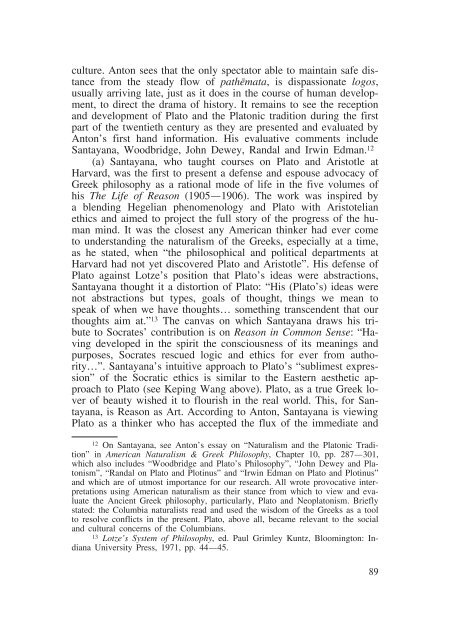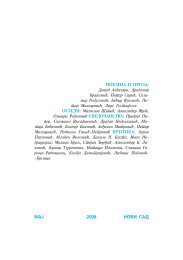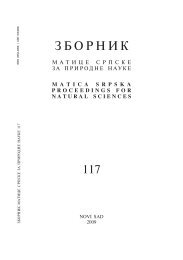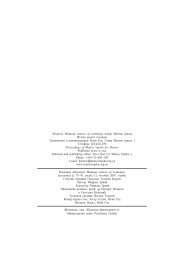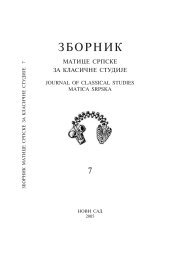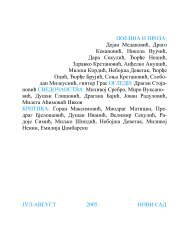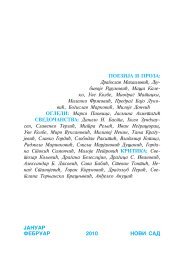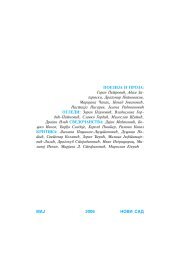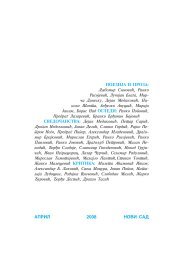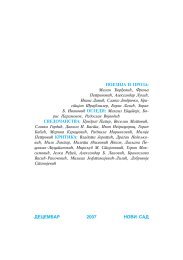You also want an ePaper? Increase the reach of your titles
YUMPU automatically turns print PDFs into web optimized ePapers that Google loves.
culture. Anton sees that the only spectator able to maintain safe distance<br />
from the steady flow of pathÊmata, is dispassionate logos,<br />
usually arriving late, just as it does in the course of human development,<br />
to direct the drama of history. It remains to see the reception<br />
and development of Plato and the Platonic tradition during the first<br />
part of the twentieth century as they are presented and evaluated by<br />
Anton's first hand information. His evaluative comments include<br />
Santayana, Woodbridge, John Dewey, Randal and Irwin Edman. 12<br />
(a) Santayana, who taught courses on Plato and Aristotle at<br />
Harvard, was the first to present a defense and espouse advocacy of<br />
Greek philosophy as a rational mode of life in the five volumes of<br />
his The Life of Reason (1905—1906). The work was inspired by<br />
a blending Hegelian phenomenology and Plato with Aristotelian<br />
ethics and aimed to project the full story of the progress of the human<br />
mind. It was the closest any American thinker had ever come<br />
to understanding the naturalism of the Greeks, especially at a time,<br />
as he stated, when “the philosophical and political departments at<br />
Harvard had not yet discovered Plato and Aristotle". His defense of<br />
Plato against Lotze's position that Plato's ideas were abstractions,<br />
Santayana thought it a distortion of Plato: “His (Plato's) ideas were<br />
not abstractions but types, goals of thought, things we mean to<br />
speak of when we have thoughts… something transcendent that our<br />
thoughts aim at." 13 The canvas on which Santayana draws his tribute<br />
to Socrates' contribution is on Reason in Common Sense: “Having<br />
developed in the spirit the consciousness of its meanings and<br />
purposes, Socrates rescued logic and ethics for ever from authority…".<br />
Santayana's intuitive approach to Plato's “sublimest expression"<br />
of the Socratic ethics is similar to the Eastern aesthetic approach<br />
to Plato (see Keping Wang above). Plato, as a true Greek lover<br />
of beauty wished it to flourish in the real world. This, for Santayana,<br />
is Reason as Art. According to Anton, Santayana is viewing<br />
Plato as a thinker who has accepted the flux of the immediate and<br />
12 On Santayana, see Anton's essay on “Naturalism and the Platonic Tradition"<br />
in American Naturalism & Greek Philosophy, Chapter 10, pp. 287—301,<br />
which also includes “Woodbridge and Plato's Philosophy", “John Dewey and Platonism",<br />
“Randal on Plato and Plotinus" and “Irwin Edman on Plato and Plotinus"<br />
and which are of utmost importance for our research. All wrote provocative interpretations<br />
using American naturalism as their stance from which to view and evaluate<br />
the Ancient Greek philosophy, particularly, Plato and Neoplatonism. Briefly<br />
stated: the Columbia naturalists read and used the wisdom of the Greeks as a tool<br />
to resolve conflicts in the present. Plato, above all, became relevant to the social<br />
and cultural concerns of the Columbians.<br />
13 Lotze's System of Philosophy, ed. Paul Grimley Kuntz, Bloomington: Indiana<br />
University Press, 1971, pp. 44—45.<br />
89


